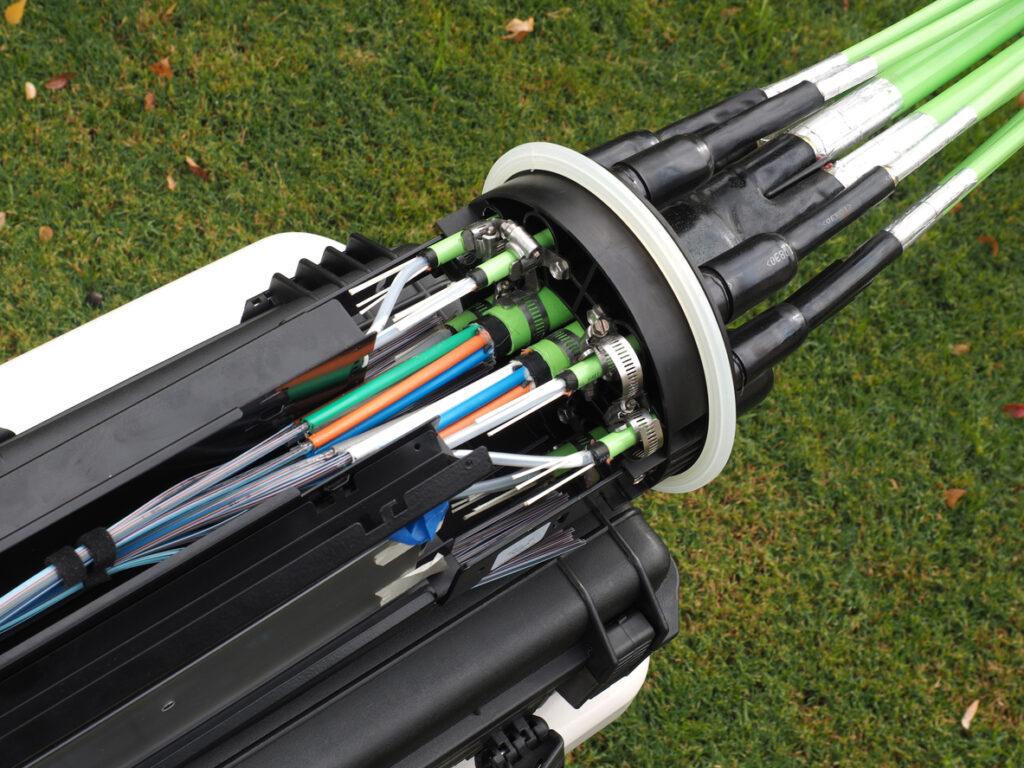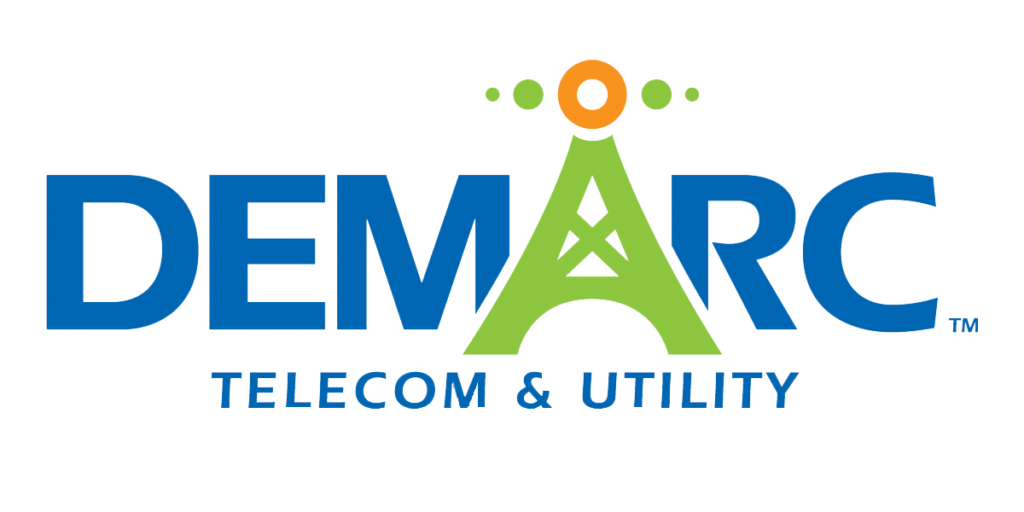Splicing
Fiber Splicing: The Backbone of Reliable Connectivity
In today’s interconnected world, where seamless communication and data transfer are paramount, the importance of fiber optic splicing cannot be overstated. At Demarc Telecom, we understand that high-performance networks require precision and expertise at every stage of implementation. Fiber splicing is at the heart of this process, ensuring that the intricate connections between fiber optic cables are strong, reliable, and efficient.
What is Fiber Splicing?
Fiber splicing refers to the process of joining two optical fibers together to create a continuous optical path. This technique is essential for extending the reach of fiber optic cables, repairing damaged cables, or integrating fibers into complex network infrastructures. Whether it’s a metropolitan area network (MAN), a data center backbone, or a residential broadband system, splicing plays a critical role in maintaining optimal network performance.
There are two primary methods of fiber splicing:
Fusion Splicing: This involves welding the ends of two fibers together using an electric arc. Fusion splicing is the preferred method for most applications due to its low insertion loss and high reliability.
Mechanical Splicing: This technique aligns the fibers precisely and holds them together using a mechanical device or gel. While it’s quicker and easier to perform, it typically has higher insertion loss compared to fusion splicing.
At Demarc Telecom, we specialize in fusion splicing, delivering superior results for our clients across various industries.


The Fiber Splicing Process
Ensuring a flawless splice requires meticulous attention to detail and the use of advanced tools. Here’s a step-by-step overview of the fiber splicing process:
Preparation: The fibers are carefully stripped of their protective coatings, cleaned, and cleaved to create smooth, flat ends. Precision during this stage is critical to avoid imperfections that could affect the splice.
Alignment: Using state-of-the-art splicing equipment, the fibers are precisely aligned to ensure maximum light transmission. Proper alignment minimizes splice loss and prevents signal degradation.
Splicing: For fusion splicing, an electric arc is used to melt the fiber ends together, creating a seamless bond. Mechanical splicing involves securing the fibers with a splicing device.
Testing: After splicing, the connection is tested for optical performance, ensuring it meets the required standards. At Demarc Telecom, we employ rigorous testing protocols, including OTDR Power Meter Testing and Fiber Characterization Testing, to verify splice quality and network integrity.
Protection: The splice point is protected with a heat-shrink sleeve or enclosure to safeguard it against environmental factors and mechanical stress.
Applications of Fiber Splicing
Fiber splicing is integral to a wide range of applications, including:
Network Expansions: When extending existing fiber networks, splicing ensures smooth integration without compromising performance.
Cable Repairs: Splicing is a cost-effective solution for repairing damaged cables, restoring connectivity quickly and efficiently.
Custom Configurations: Splicing allows for the creation of custom fiber assemblies, enabling tailored solutions for unique network requirements.
High-Density Networks: In environments such as data centers, splicing supports the creation of high-density connections to maximize space and performance.
Coax Splicing: Providing seamless connections for hybrid fiber-coaxial networks.
Why Choose Demarc Telecom for Fiber Splicing?
At Demarc Telecom, we pride ourselves on delivering unmatched expertise and precision in fiber splicing services. Here’s what sets us apart:
Advanced Equipment: We use cutting-edge splicing machines and testing tools to ensure optimal performance and reliability.
Experienced Technicians: Our team comprises certified professionals with extensive experience in fiber optic technology, troubleshooting, and network support.
Comprehensive Solutions: From planning and installation to testing and maintenance, we offer end-to-end support for your fiber optic needs.
Commitment to Quality: We adhere to industry standards and best practices, ensuring every splice meets the highest quality benchmarks.
Fast Turnaround: Time-sensitive projects are our specialty. We work efficiently without compromising on quality, keeping your operations on schedule.
The Importance of High-Quality Fiber Splicing
Subpar splicing can lead to increased signal loss, network downtime, and costly repairs. That’s why it’s crucial to partner with a provider who prioritizes precision and reliability. High-quality splicing ensures:
Enhanced Network Performance: Properly spliced fibers minimize signal loss, maximizing data transfer speeds and reliability.
Reduced Maintenance Costs: Durable splices are less prone to failure, reducing the need for frequent repairs.
Long-Term Scalability: Robust splicing supports network growth, making it easier to accommodate future expansions.
Industries We Serve
Our fiber splicing services cater to diverse industries, including:
Telecommunications: Building and maintaining robust communication networks.
Energy and Utilities: Supporting smart grid technologies and infrastructure.
Healthcare: Enabling high-speed data transfer for medical imaging and patient care systems.
Education: Enhancing connectivity for schools, universities, and research institutions.
Government: Strengthening public sector networks for improved service delivery.
Municipalities: Providing reliable connectivity solutions to local governments.
Corporations: Delivering tailored fiber and coax splicing solutions for businesses of all sizes.
Partner with Demarc Telecom
Fiber splicing is a critical component of modern communication infrastructure, and Demarc Telecom is here to ensure your networks operate at peak performance. Whether you’re expanding your fiber optic network, repairing damaged cables, troubleshooting connectivity issues, or optimizing existing connections, our team has the expertise and tools to deliver exceptional results.
Contact us today to learn more about our fiber splicing services and how we can support your connectivity goals. At Demarc Telecom, we’re committed to keeping you connected—now and in the future.

About Demarc Telecom & Utility LLC
Demarc Telecom & Utility LLC is a leading Telecommunications Contractor that services New Hampshire, Massachusetts, and greater New England. We have over 20 years of experience in the telecommunications and electric utility industries. We have taken a comprehensive approach to project management, providing our clients with a wide range of services to cover their network and data center needs.
Demarc Telecom was founded in 2014 by owners Randy Evans and Steve Dumont. The company started with one employee and has grown steadily to ten full-time employees. Demarc services telecom service providers, higher education institutions, commercial businesses, and more. Our services include plant design and installation of fiber optic, data, and wireless networks. We are detail oriented, have an excellent safety record, and deliver innovative solutions to our customers. Get in touch today to discuss your future project.
SAFETY AND CERTIFICATIONS AT DEMARC TELECOM & UTILITY
Demarc Telecom prides ourselves on the highest levels of training and safety. We are well-credentialled with industry standard training within the cutting edge of best practices. Additionally, Demarc Telecom practices safe procedures following federal, state, and OSHA standards. Safety and Training are key components in allowing us to provide the highest quality work while keeping our employees and customers safe.
- OSHA 30
- OSHA 10
- FOA Certified
- CommScope OSP Certified
- First Aid Certified
- MBE Low Voltage Company
- MBE Fiber Optic Company
- OSHA 30
- OSHA 10
- FOA Certified
- CommScope OSP Certified
- First Aid Certified
- MBE Low Voltage Company
- MBE Fiber Optic Company


CONTACT OUR TEAM


